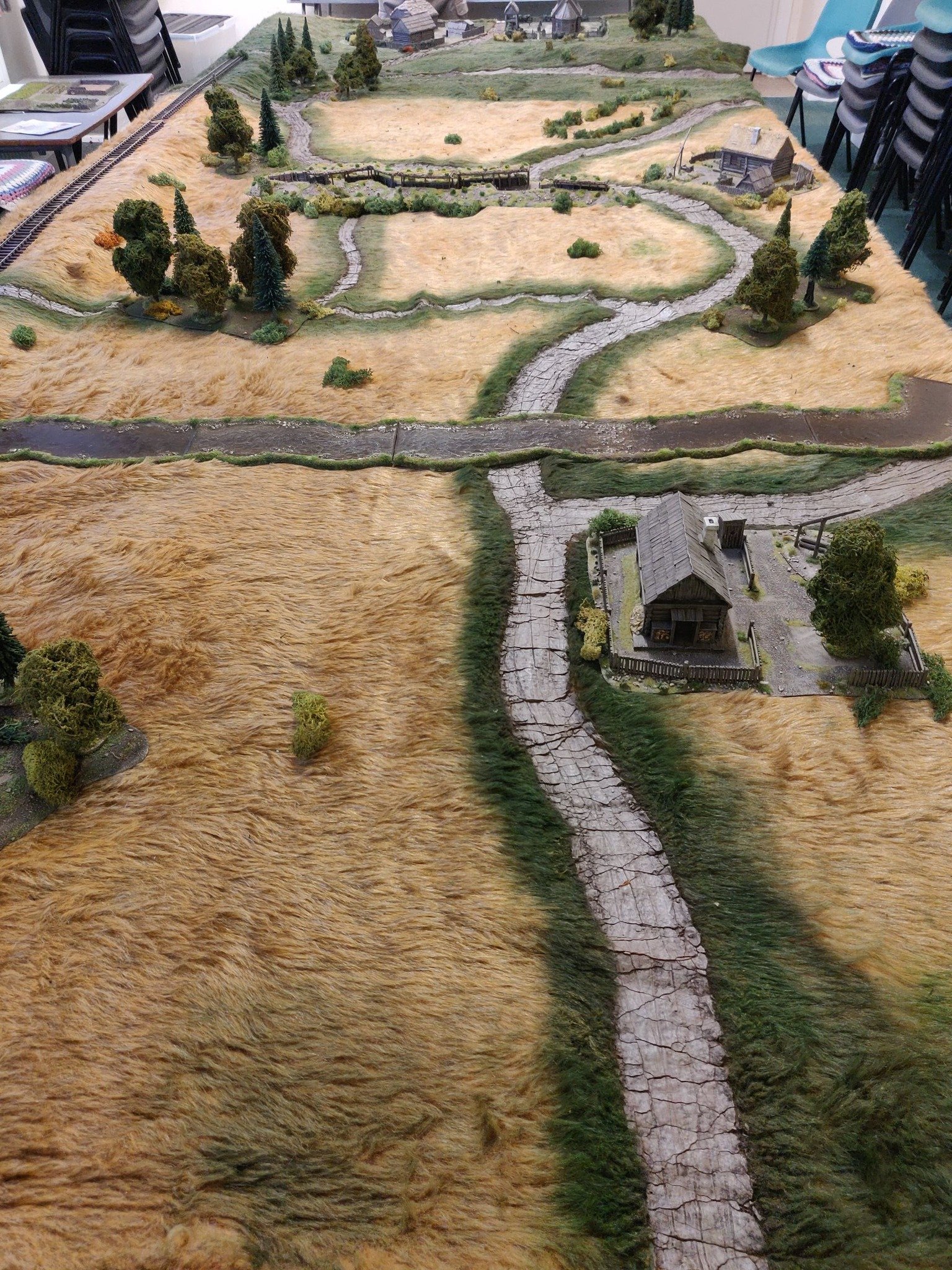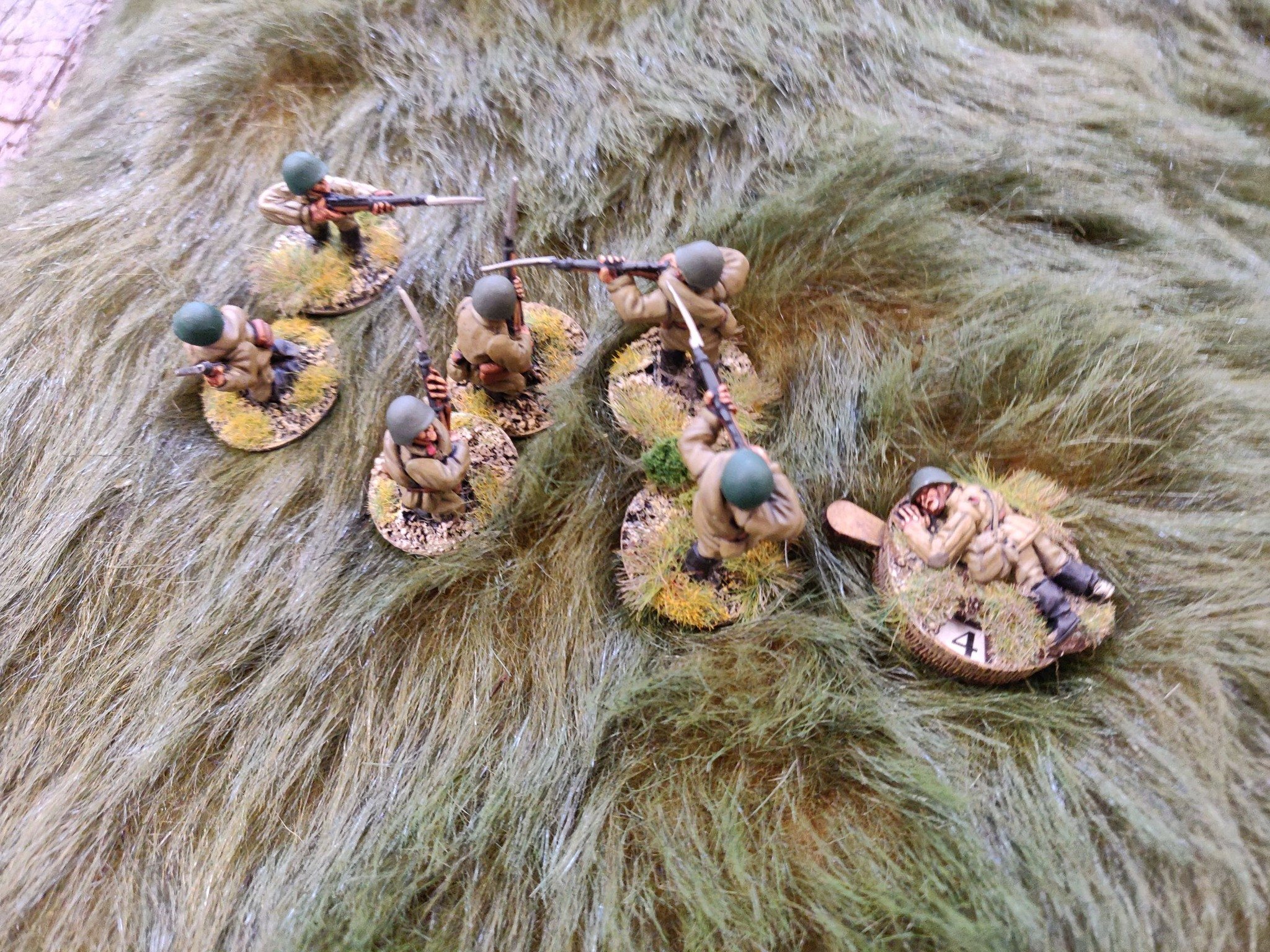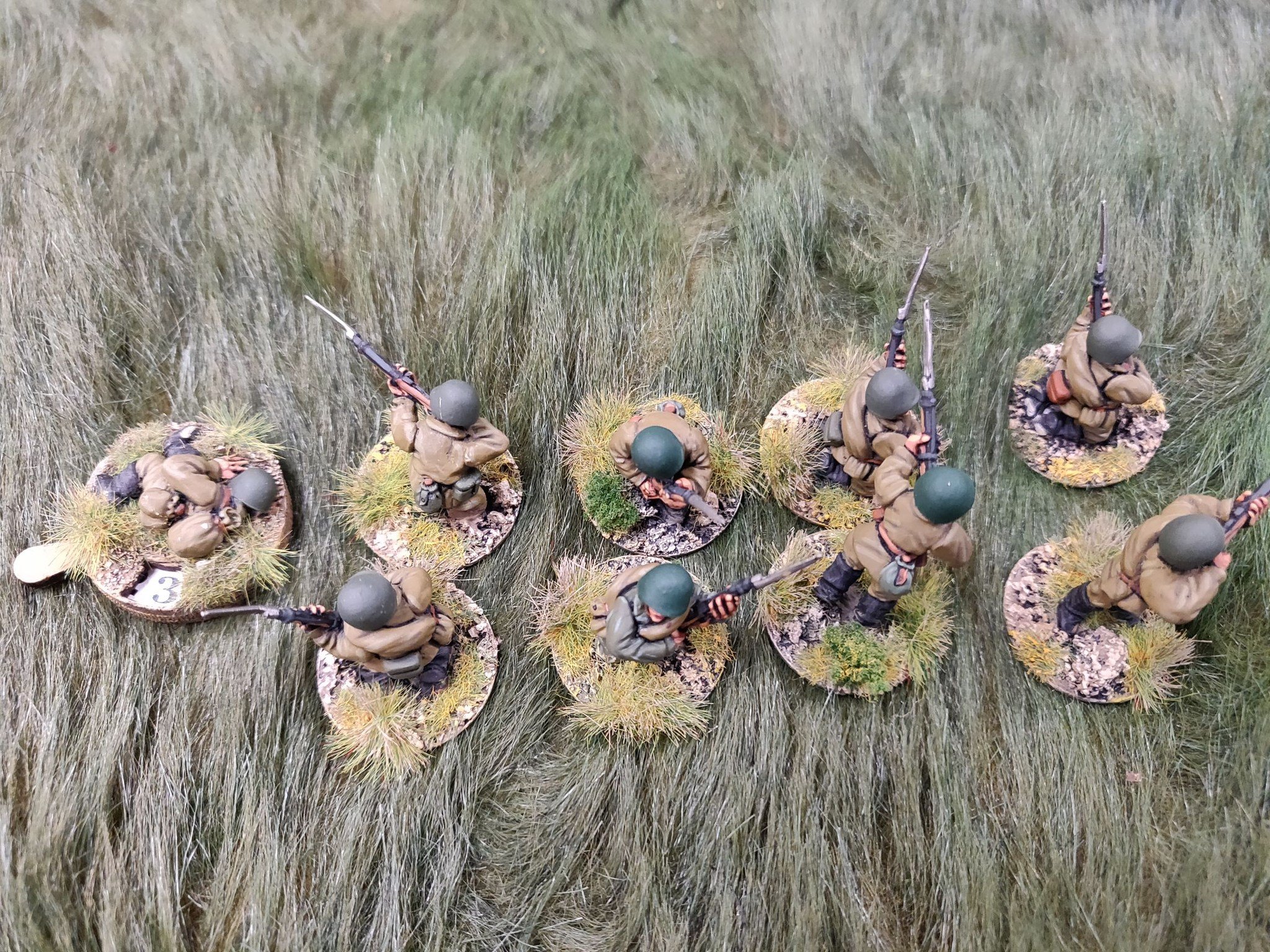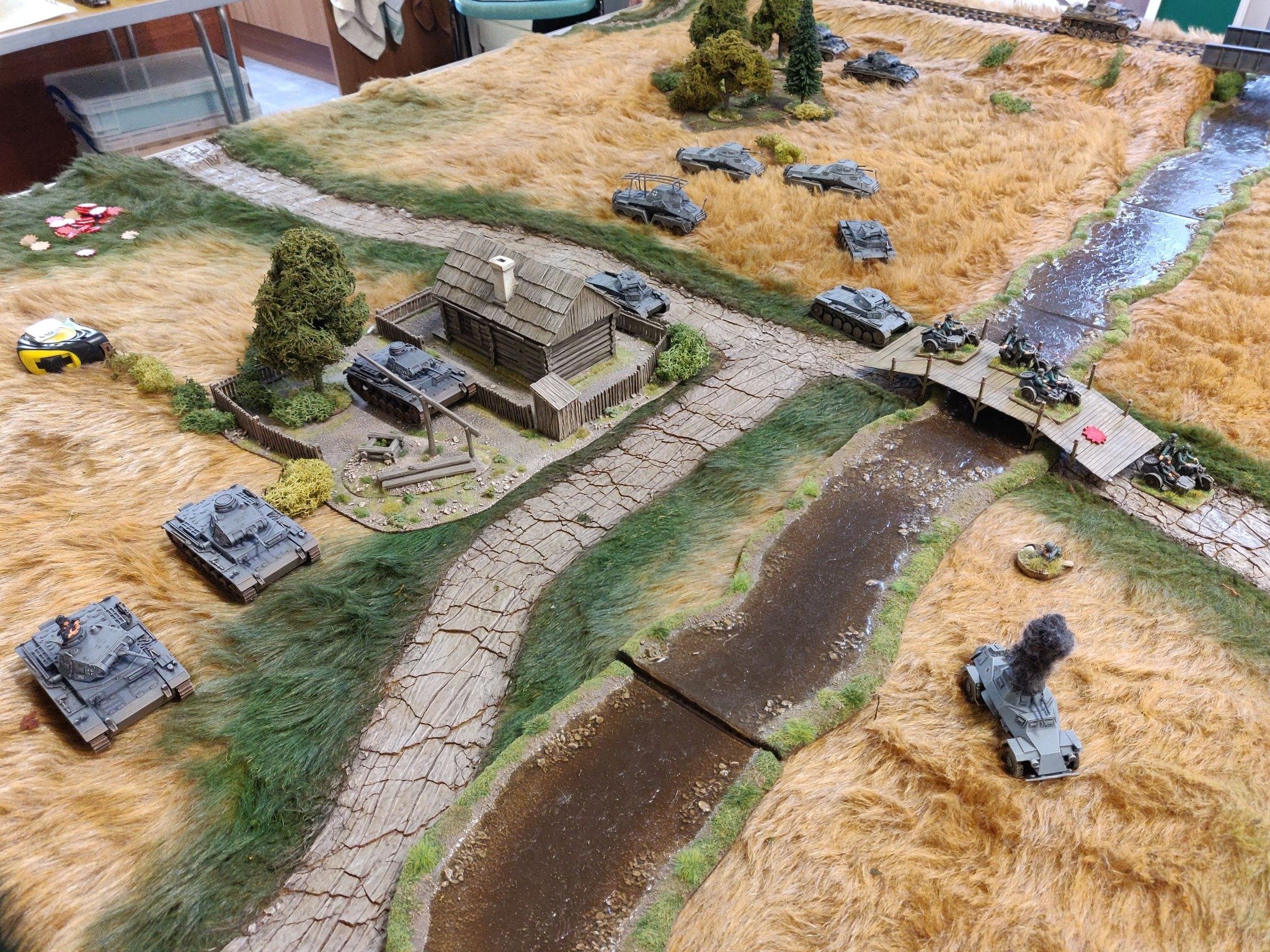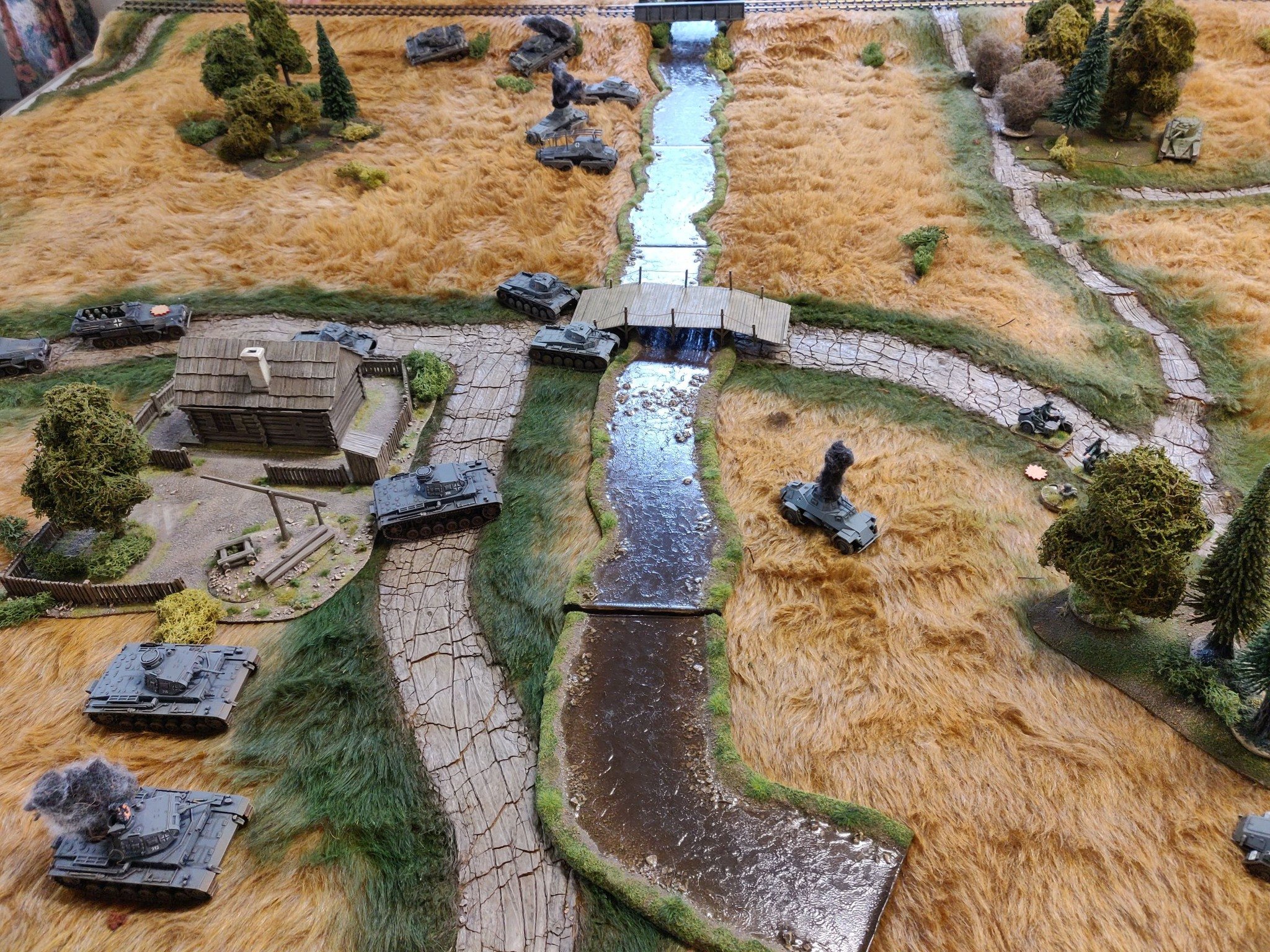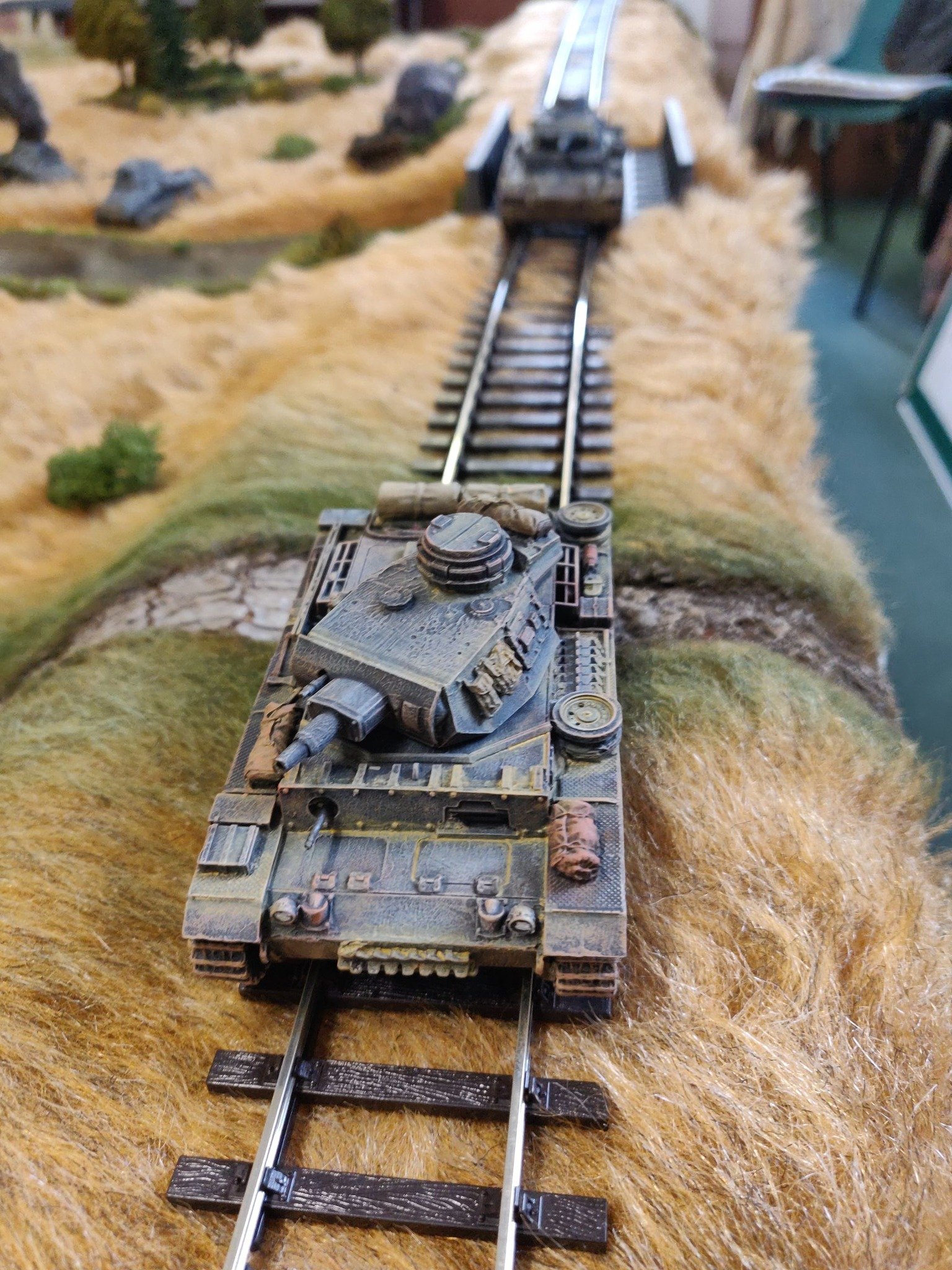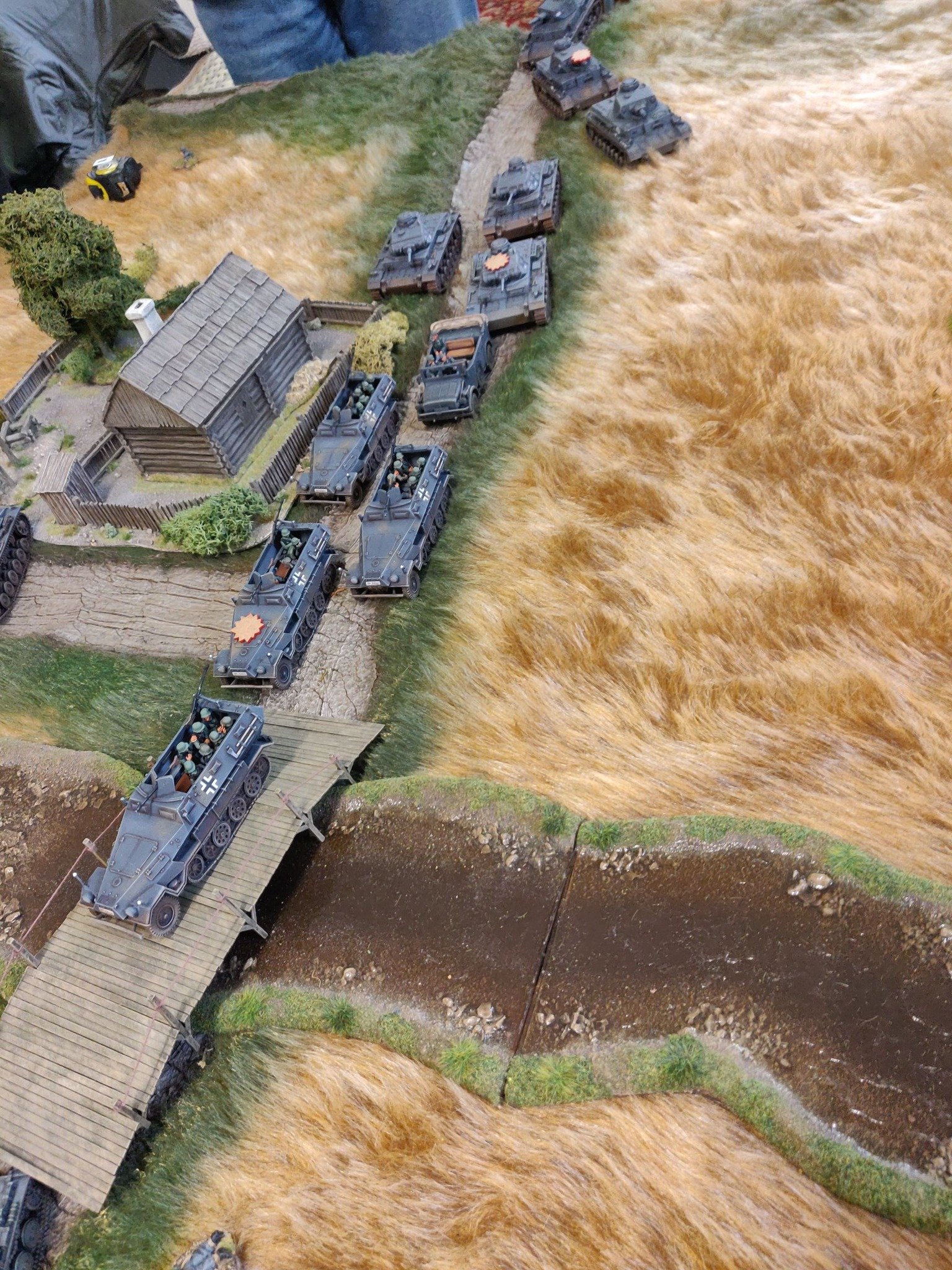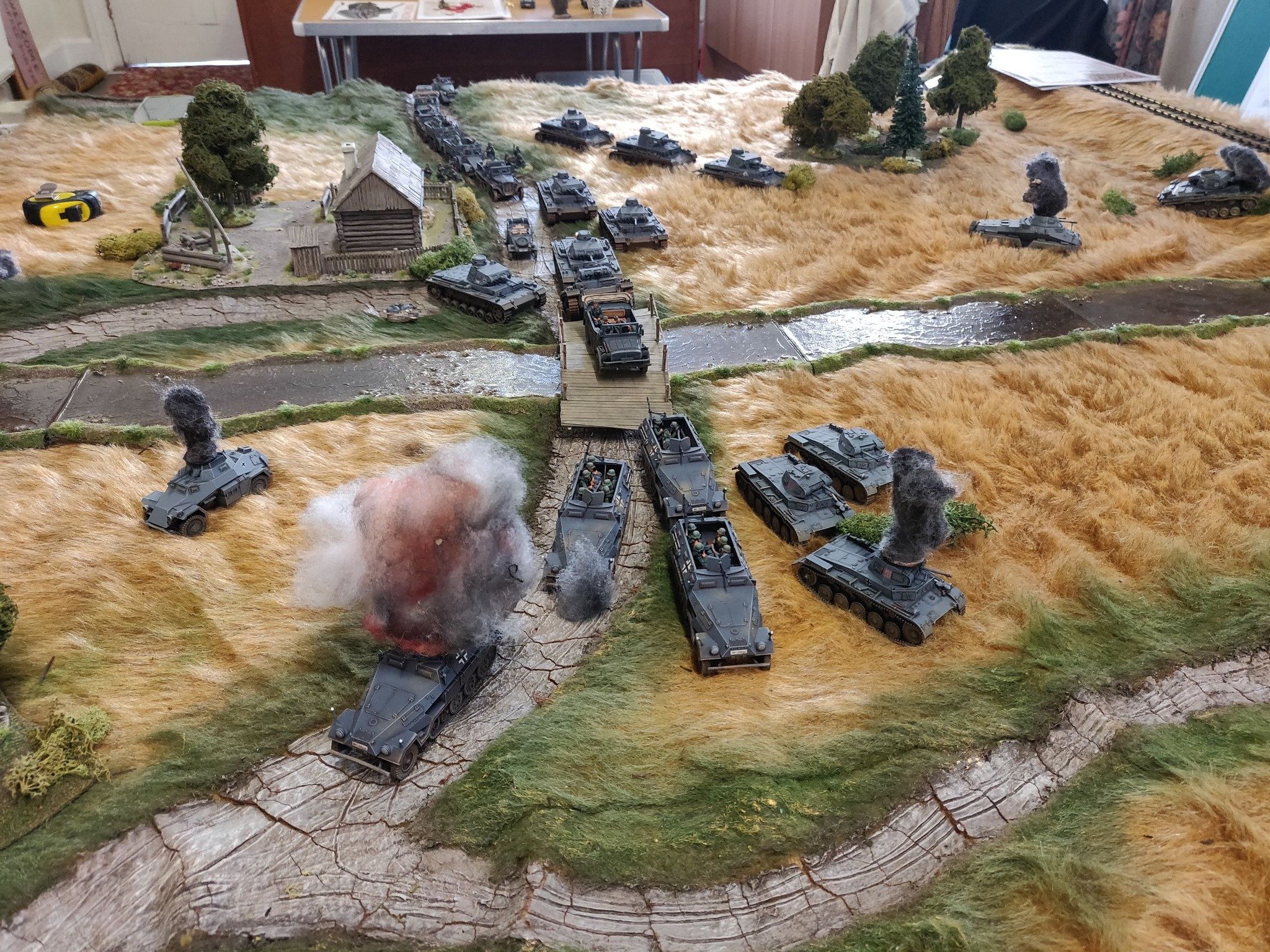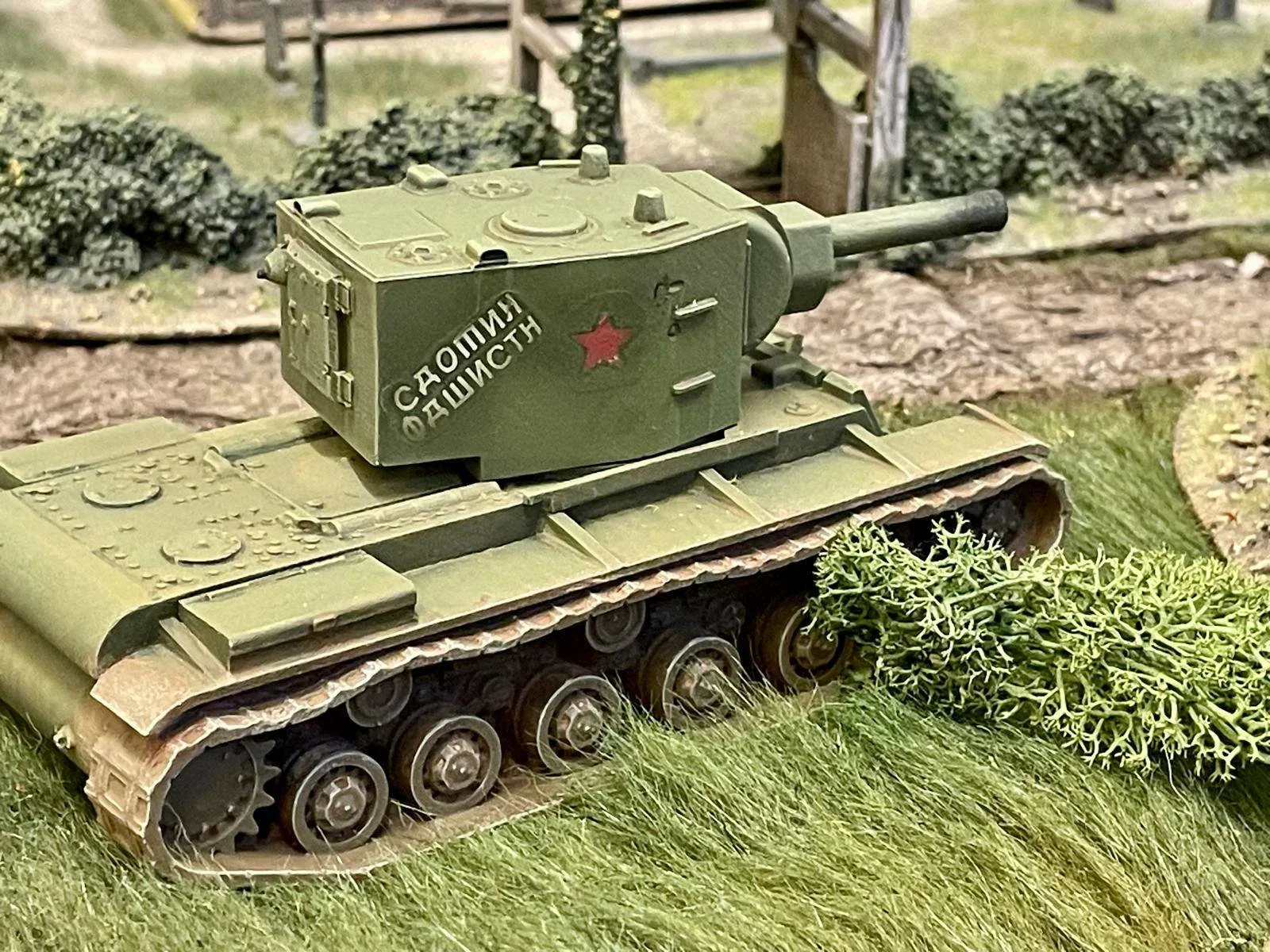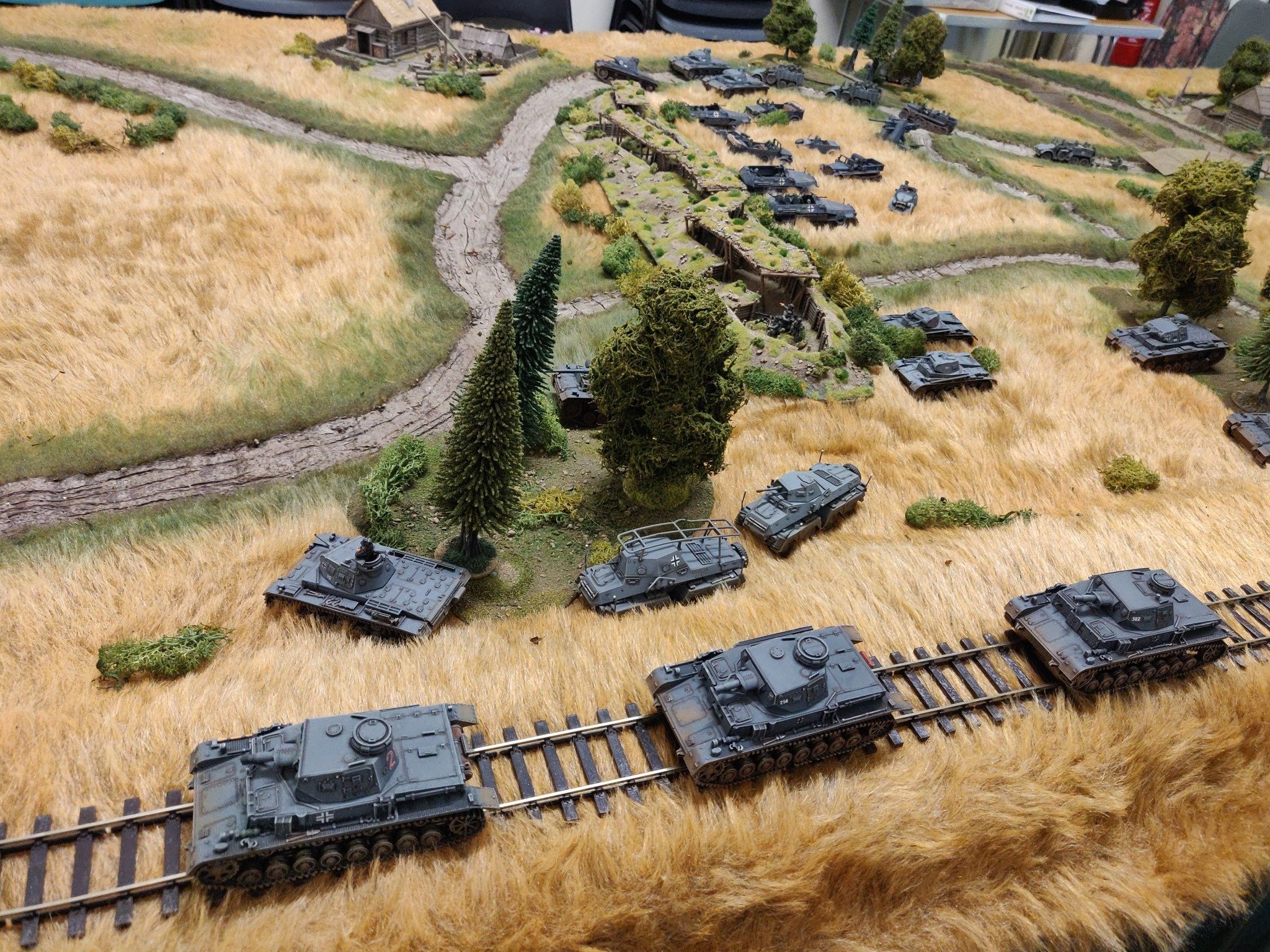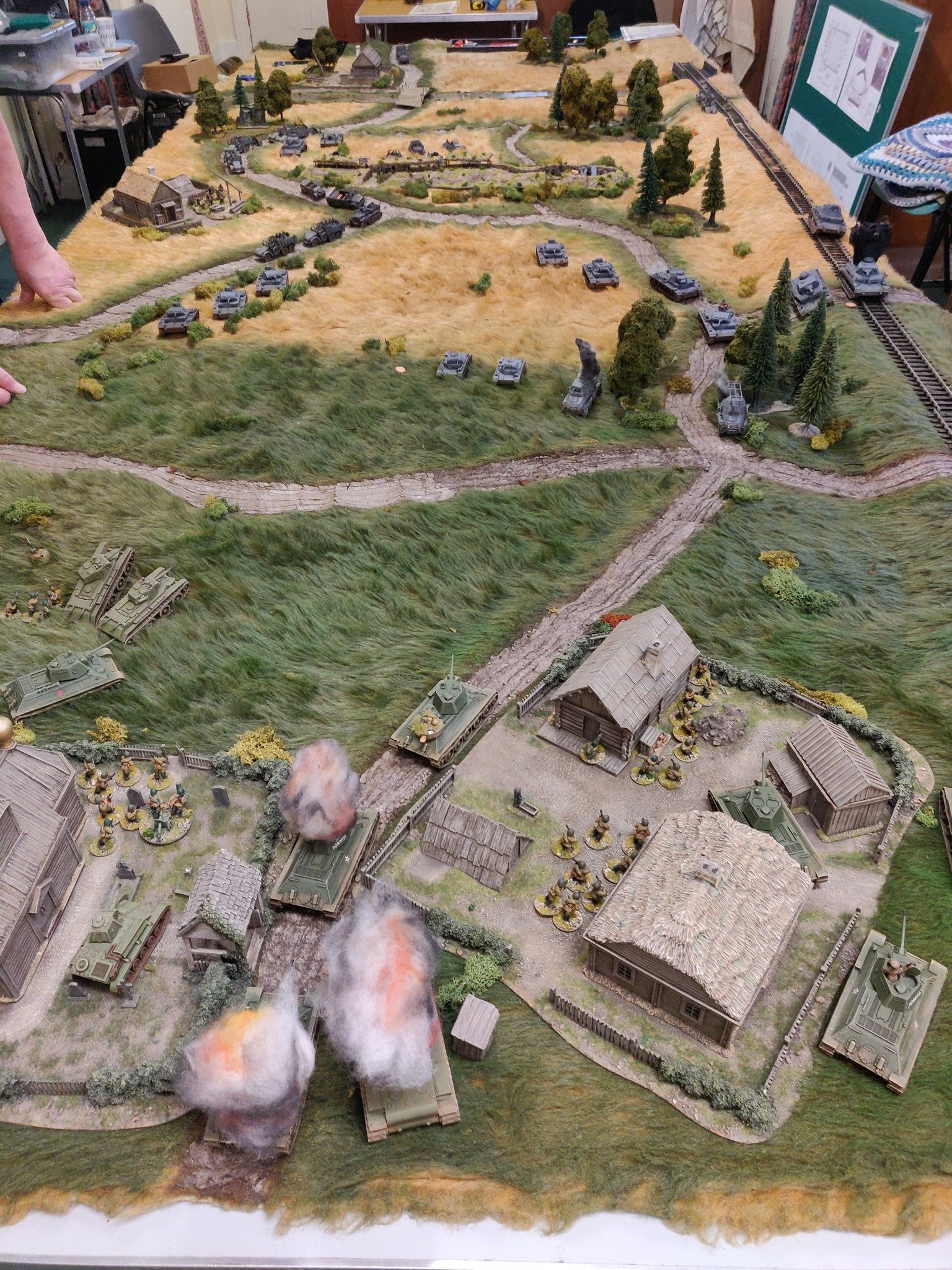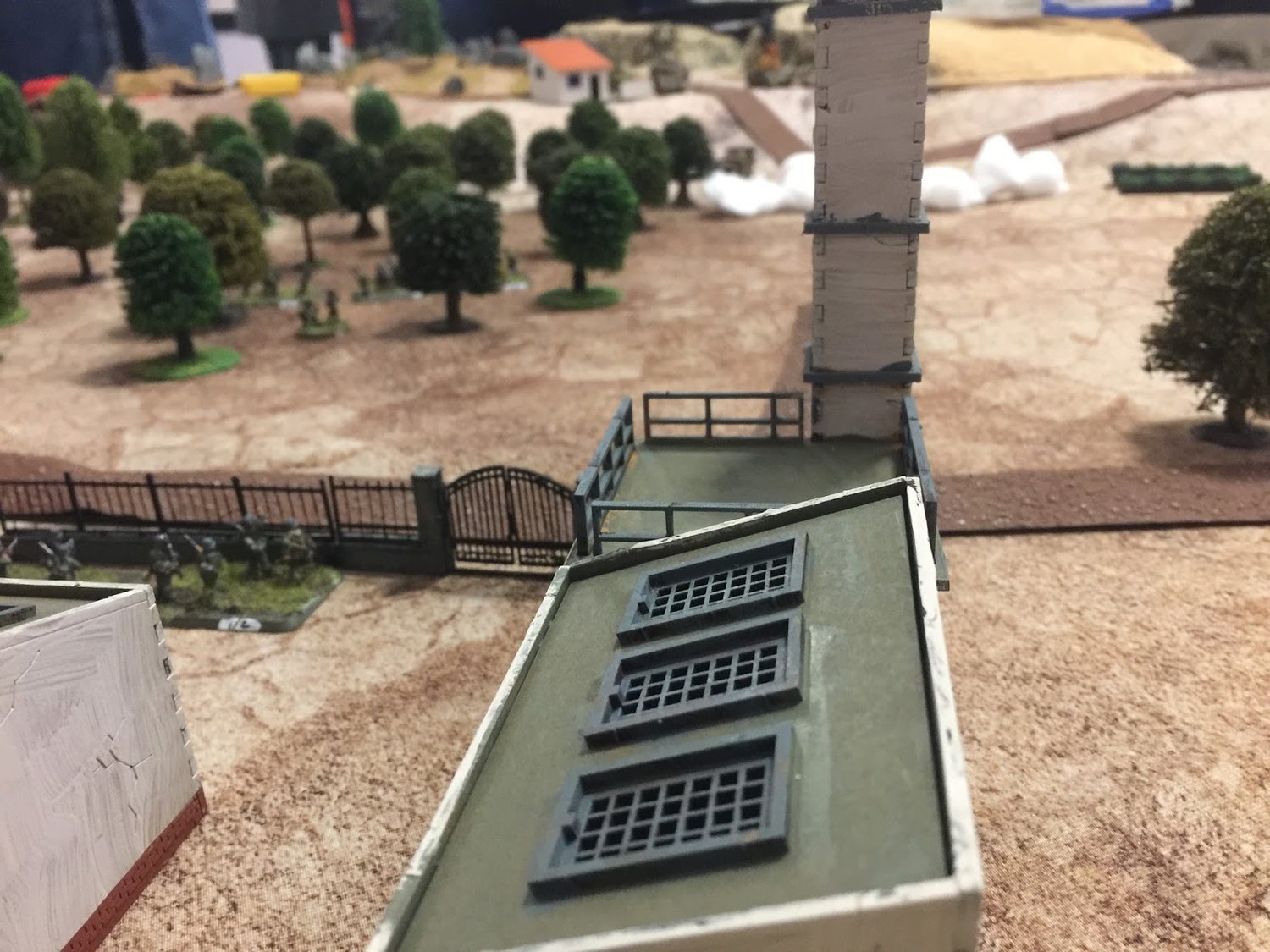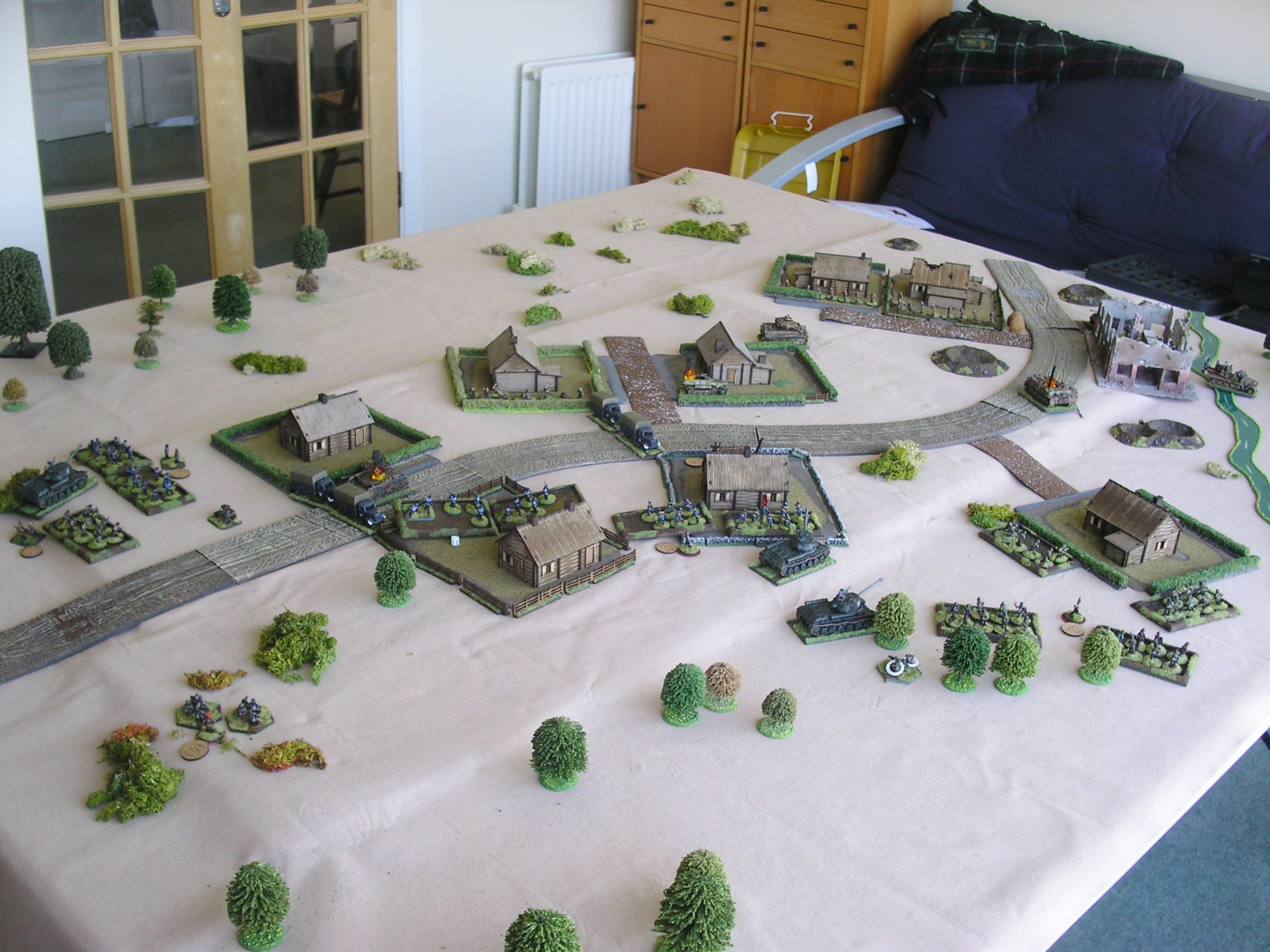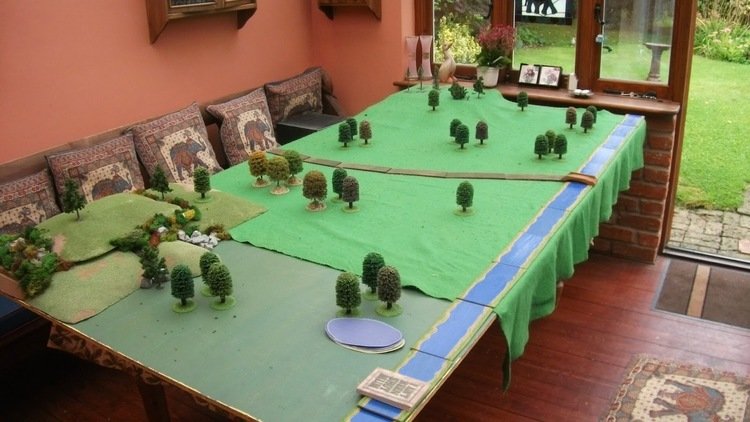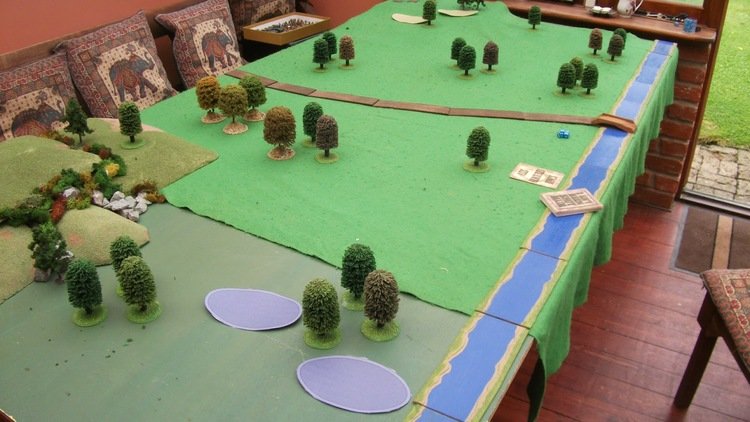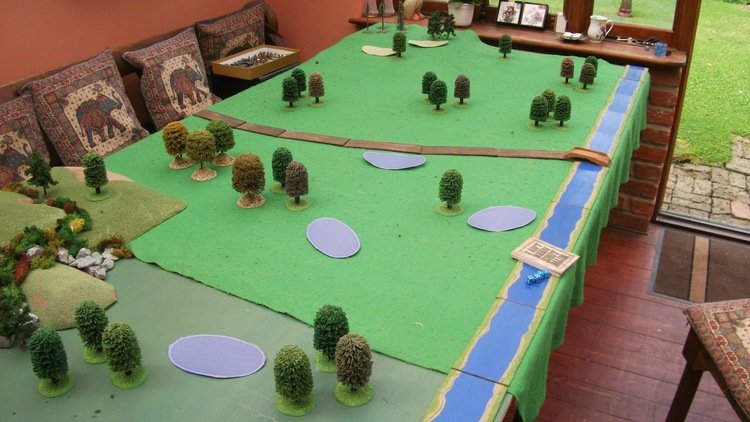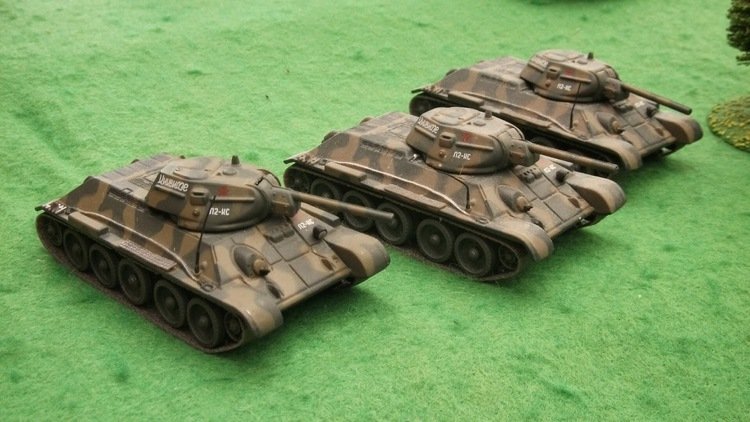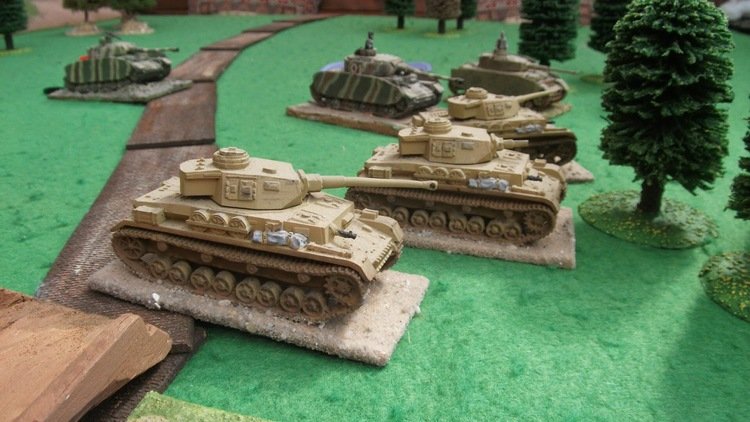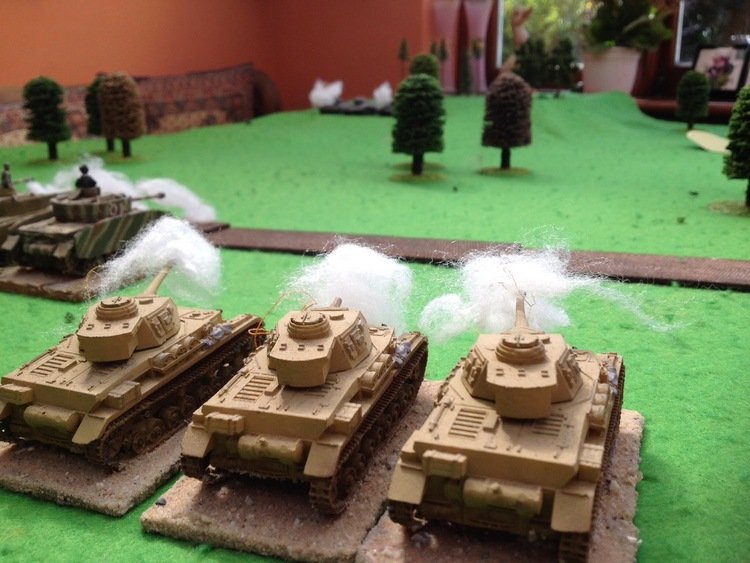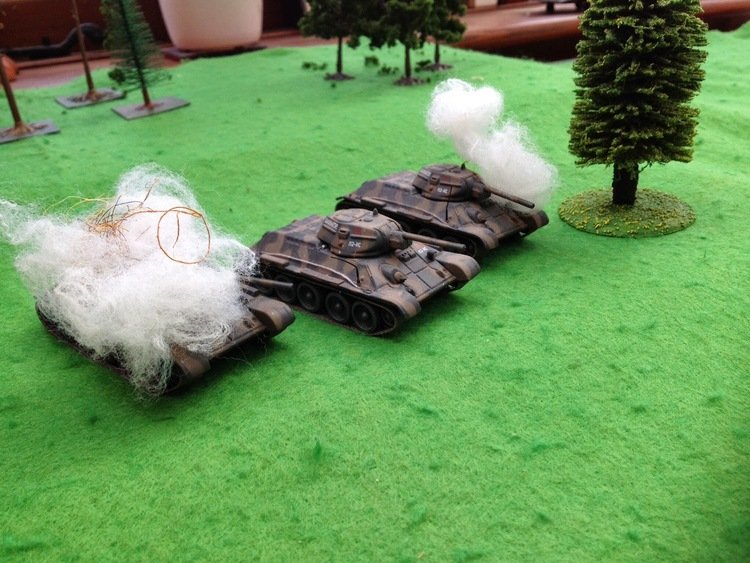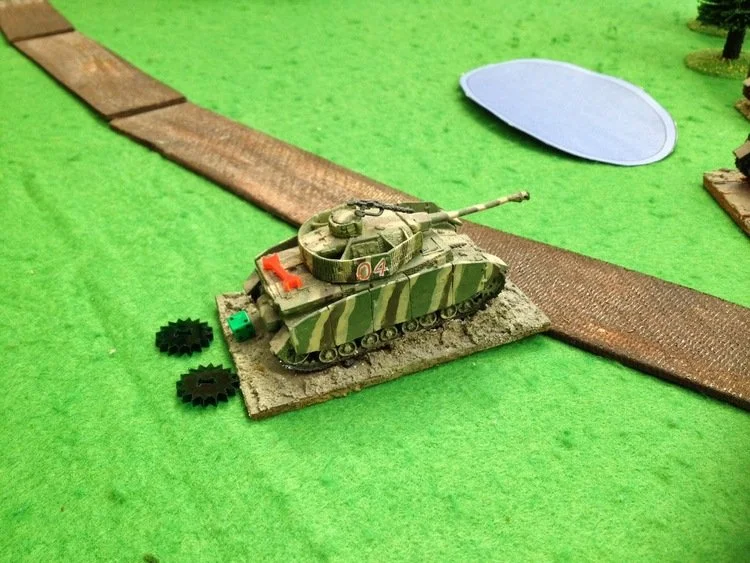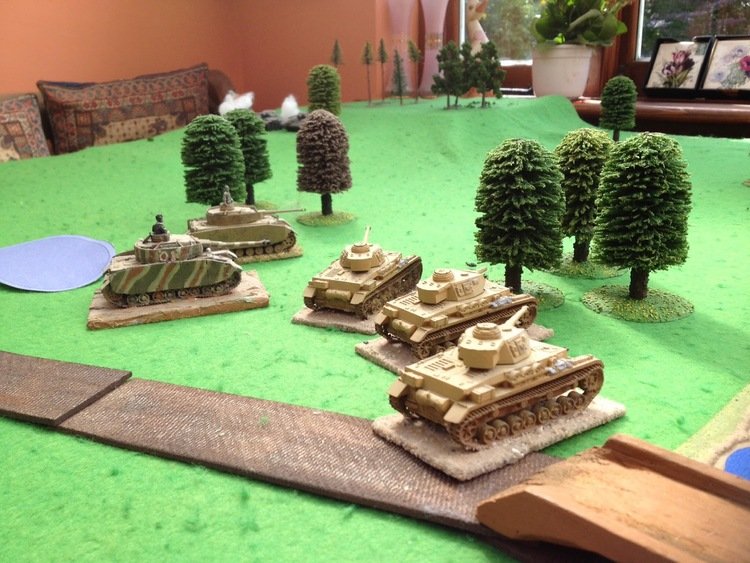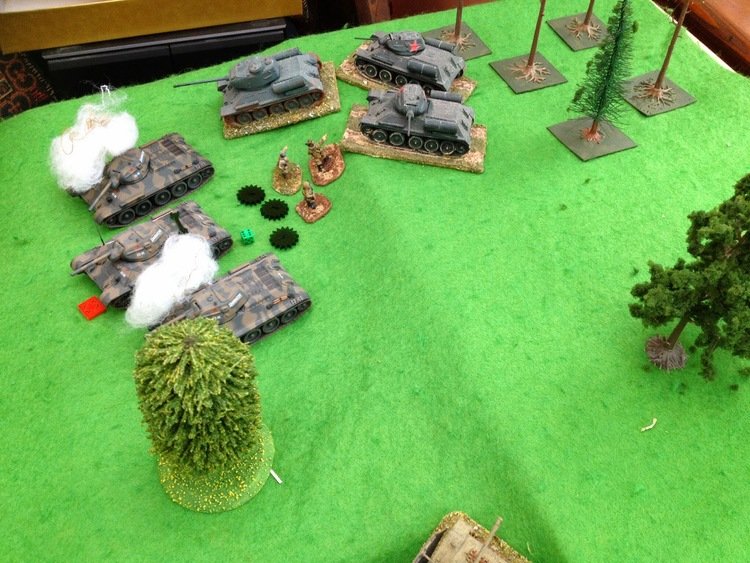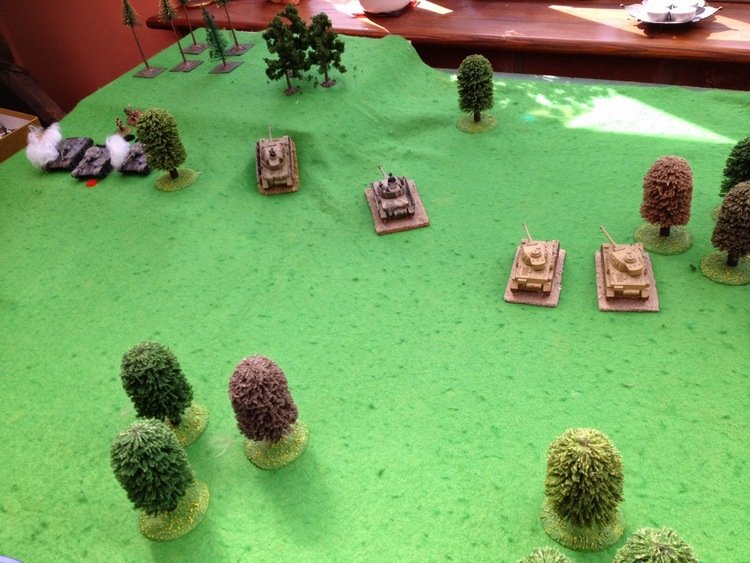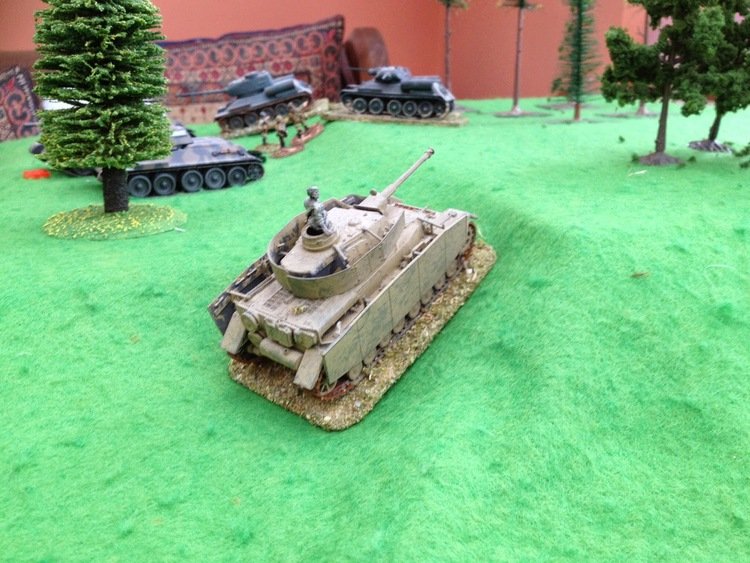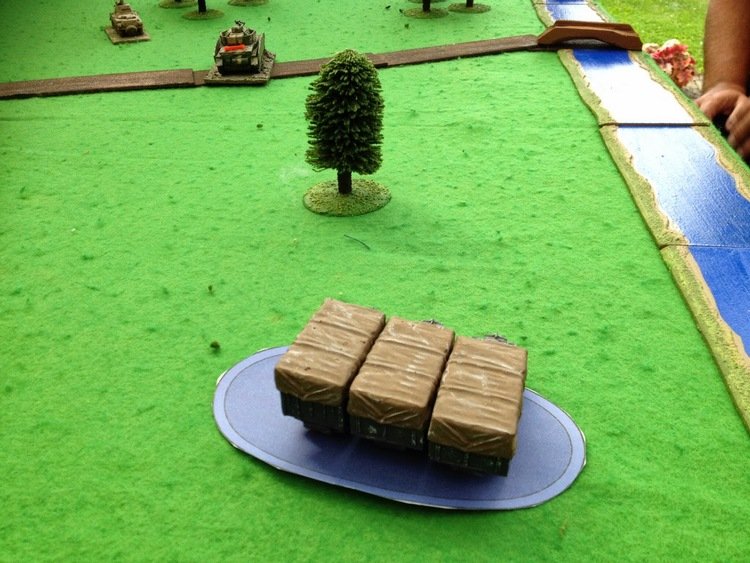Friend Rob fancied a go at I Ain’t Been Shot Mum so what better way to start than to play the first scenario of the two Polish campaign books: Chojnice.
This game is set on 1st September 1939, and involves the Poles (played by me) trying to hold a vital railway bridge for long enough to blow it up whilst Rob, playing the Germans, attempts to take the bridge and defuse any charges that have been laid.
The start of the game, viewed from the German end of the table
Polish spotting forced the deployment of the first wave of Germans: a zug of light armoured cars heading up the right of the railway line, and a zug of machine guns deploying right on the edge of the wood just by the bridge.
Likewise German spotting revealed a platoon of Polish infantry in trenches just by the bridge. The die in the middle of the bridge shows how many times the Turn Card has appeared: once it reaches a certain number, the Polish engineers may try and blow the bridge up.
The action then switched to the small road bridge on one edge of the table, with a German kradschutzen (motorbike-mounted) platoon trying to get over the otherwise impassable river. They were trying to get to the small copse of woods at the far end of the table where a couple of Polish mortars had deployed and were busy ranging in on the German machine guns in the centre.
Unfortunately, the homestead near the road bridge was packed full of another Polish platoon, one squad of which opened fire on the lead element of kradschutzen and, with a cracking roll of the dice, wiped them out!
By now the Polish mortars were properly ranged in, and had started dropping shells onto the German machine guns. These had, however, already managed to severeky damage one squad of the Polish platoon protecting the bridge. The German armoured cars were also now in a position to blast away: their 20mm autocannon keeping Polish heads firmly down.
In return, however, off-table Polish artillery fire had also now begun to rain down on the Germans in the central wood.
Although the Poles were taking casualties, so were the advancing Germans, and it wouldn’t be long before a platoon of taczanka horse-drawn machine guns also added their weight to Polish firepower.
The Turn Card had also now appeared the requisite number of times, with the Poles just waiting for the right combination of cards and dice to blow the bridge: their first attempt having failed.
The pressure was therefore on the Germans to break the deadlock, and luckily for then, their missing third platoon finally found their way to the bridge and deployed in position to assault the bridge.
More Polish mortare and artillery fire rained down, severely damaging the third platoon of Germans as they waited for the order to charge the bridge.
The Poles had another go at blowing the bridge, and failed again, which gave the German commander the opportunity to send in his men.
It was carnage: the Poles were already battered by constant machine gun and autocannon fire, and just couldn’t defend themselves against frsh German infantry keen to get out from under the artillery and mortar bombardment.
The Poles were largely wiped out and the bridge was now in German hands, charges removed, and the rest of the Poles were forced to retreat.
Could the Poles have re-taken the bridge?
Possibly, although it would have been very difficult for them to do so, especially with the German armoured cars still very much in the game.
In the end we called time at this point, giving the Germans the win, although they had taken just about 50% casualties to their infantry. A victory, but a very costly victory indeed!












